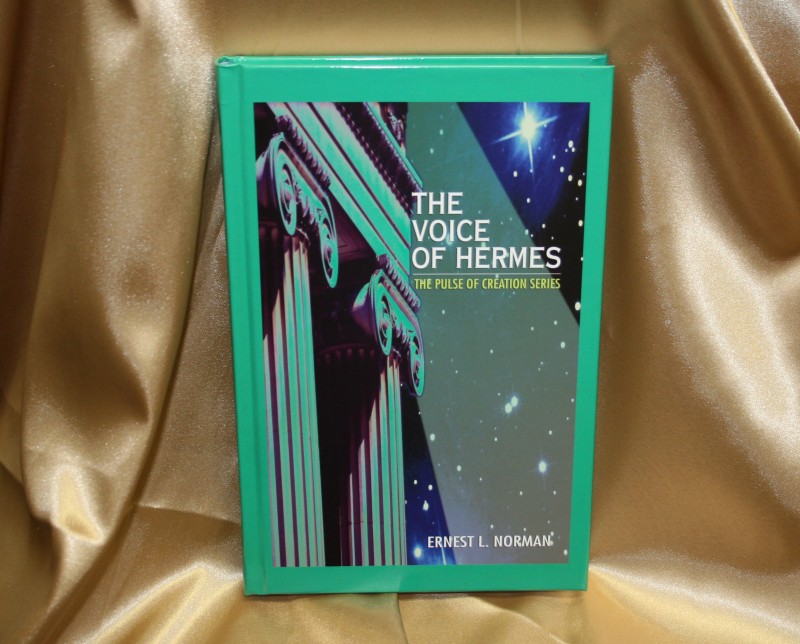The following short video can be a great help for students to visualize the infinite complexities of the Microcosm as well as the Macrocosm. Just think of the intricacies of the vortexes and the intelligence enabling this life force to exist. It also shows the Moderator’s description of Frequency Relationship. Note how the various cells know which to link and which to ignore!
Harvard University selected XVIVO to develop an animation that would take their cellular biology students on a journey through the microscopic world of a cell, illustrating mechanisms that allow a white blood cell to sense its surroundings and respond to an external stimulus. This award winning piece was the first topic in a series of animations XVIVO is creating for Harvard’s educational website Bio-Visions at Harvard.
Descriptive Terms from Video:
Organelle
Cell Biology; a specialized part of a cell having some specific function; a cell organ.
P-Section
A unit of selection is a biological entity within the hierarchy of biological organization (e.g. self-reproducing molecules, genes, cells, individuals, groups, species) that is subject to natural selection.
Leukocytes
White blood cells, or leukocytes (also spelled “leucocytes”), are cells of the immune system involved in defending the body against both infectious disease and foreign materials.
Lipid Raft
The plasma membranes of cells contain combinations of glycosphingolipids and protein receptors organized in glycolipoprotein micro-domains termed lipid rafts. These specialized membrane micro-domains compartmentalize cellular processes by serving as organizing centers for the assembly of signaling molecules, influencing membrane fluidity and membrane protein trafficking, and regulating neurotransmission and receptor trafficking..
Cholesterol
Cholesterol is an organic molecule. It is a sterol (or modified steroid), and an essential structural component of animal cell membranes that is required to establish proper membrane permeability and fluidity. Cholesterol is thus considered within the class of lipid molecules.
Chemokine
Chemokines are a family of small cytokines, or signaling proteins secreted by cells. Their name is derived from their ability to induce directed chemotaxis in nearby responsive cells; they are chemotactic cytokines. Proteins are classified as chemokines according to shared structural characteristics.
Proteoglycan
Proteoglycans are proteins that are heavily glycosylated. The basic proteoglycan unit consists of a “core protein” with one or more covalently attached glycosaminoglycan (GAG) chain(s). The point of attachment is a Ser residue to which the glycosaminoglycan is joined through a tetrasaccharide bridge (e.g. chondroitin sulfate-GlcA-Gal-Gal-Xyl-PROTEIN)
Receptor
In the field of biochemistry, a receptor is a molecule usually found on the surface of a cell that receives chemical signals from outside the cell. When such external substances bind to a receptor, they direct the cell to do something, such as divide, die, or allow specific substances to enter or exit the cell.
Spectrin Tetramer
Spectrin is a cytoskeletal protein that lines the intracellular side of the plasma membrane in eukaryotic cells. The protein is named spectrin since it was first isolated as a major protein component of human red blood cells which had been treated with mild detergents; the detergents lysed the cells and the hemoglobin and other cytoplasmic components were washed out. In the light microscope the basic shape of the red blood cell could still be seen as the spectrin containing sub membranous cytoskeleton preserved the shape of the cell in outline.
Actin Filaments
Microfilaments or actin filaments are the thinnest filaments of the cytoskeleton, a structure found in the cytoplasm of eukaryotic cells. These linear polymers of actin subunits are flexible and relatively strong, resisting buckling by multi-piconewton compressive forces and filament fracture by nanonewton tensile forces. Microfilaments are highly versatile, functioning in cytokinesis, amoeboid movement, and changes in cell shape.
Severing Protein
Microtubules are a component of the cytoskeleton, found throughout the cytoplasm. There are many proteins that bind to microtubules, including motor proteins such as kinesin and dynein, severing proteins like katanin, and other proteins important for regulating microtubule dynamics.
Microtubules
A component of the cytoskeleton. Microtubules are very important in a number of cellular processes. They are involved in maintaining structure of the cell and together with microfilaments and intermediate filaments, they form the cytoskeleton. They also make up the internal structure of cilia and flagella. They provide platforms for intracellular transport and are involved in a variety of cellular processes.
Vesicle
In cell biology, a vesicle is a small bubble within a cell, and thus a type of organelle. Enclosed by lipid bilayer, vesicles can form naturally, for example, during endocytosis. Alternatively, they may be prepared artificially, in which case they are called liposomes.
Motor Protein
Motor proteins are a class of molecular motors that are able to move along the surface of a suitable substrate. They are powered by the hydrolysis of ATP and convert chemical energy into mechanical work. The best prominent example of a motor protein is the muscle protein myosin which “motors” the contraction of muscle fibers in animals. Motor proteins are the driving force behind most active transport of proteins and vesicles in the cytoplasm.
Mitochondria
The mitochondrion (plural mitochondria) is a membrane-enclosed structure found in most eukaryotic cells (the cells that make up plants, animals, fungi, and many other forms of life). These organelles are sometimes described as “cellular power plants” because they generate most of the cell’s supply of adenosine triphosphate (ATP), used as a source of chemical energy. In addition to supplying cellular energy, mitochondria are involved in other tasks such as signaling, cellular differentiation, cell death, as well as the control of the cell cycle and cell growth.
Centrosome
In cell biology, the centrosome is an organelle that serves as the main microtubule organizing center (MTOC) of the animal cell as well as a regulator of cell-cycle progression.
Eukaryote
Any organism having as its fundamental structural unit a cell type that contains specialized organelles in the cytoplasm, a membrane-bound nucleus enclosing genetic material organized into chromosomes, and an elaborate system of division by mitosis or meiosis, characteristic of all life forms except bacteria, blue-green algae, and other primitive microorganisms.
Centriole
A centriole is a cylindrical cell structure composed mainly of tubulin (A globular protein that is the structural constituent of microtubules) that is found in most eukaryotic cells.
Pores
An opening across both inner and outer bacterial membranes, a part of many Gram negative bacterial secretion systems – One of the openings communicating with the skin surface at the terminus of lactiferous ducts in milk-producing mammals
Ribosome
The ribosome is a large and complex molecular machine, found within all living cells, that serves as the primary site of biological protein synthesis. Ribosomes link amino acids together in the order specified by messenger RNA (mRNA) molecules.
Translocator
Translocator protein (TSPO) is a protein mainly found on the outer mitochondrial membrane. It interacts with StAR (steroidogenic acute regulatory protein) to transport cholesterol into mitochondria.
Endoplasmic Reticulum
The endoplasmic reticulum (ER) is a type of organelle in the cells of eukaryotic organisms that forms an interconnected network of flattened, membrane-enclosed sacs or tubes known as cisternae. The membranes of the ER are continuous with the outer membrane of the nuclear envelope. Endoplasmic reticulum occurs in most types of eukaryotic cells but is absent from red blood cells and spermatozoa
Golgi Apparatus
The Golgi apparatus, also known as the Golgi complex, Golgi body, or simply the Golgi, is an organelle found in most eukaryotic cells. Part of the cellular endomembrane system, the Golgi apparatus packages proteins inside the cell before they are sent to their destination; it is particularly important in the processing of proteins for secretion.
Plasma Membrane
The ‘cell membrane’ (also known as the plasma membrane or cytoplasmic membrane) is a biological membrane that separates the interior of all cells from the outside environment. The cell membrane is selectively permeable to ions and organic molecules and controls the movement of substances in and out of cells. The basic function of the cell membrane is to protect the cell from its surroundings.
G-Protein
G proteins, also known as guanosine nucleotide-binding proteins, are a family of proteins involved in transmitting signals from a variety of different stimuli outside a cell into the inside of the cell. G proteins function as molecular switches.
Integrin
Integrins are transmembrane receptors that mediate the attachment between a cell and its surroundings, such as other cells or the extracellular matrix (ECM). In signal transduction, Integrins pass information about the chemical composition and mechanical status of the ECM into the cell. Therefore, in addition to transmitting mechanical forces across otherwise vulnerable membranes, they are involved in cell signaling and the regulation of cell cycle, shape, and motility. Typically, receptors inform a cell of the molecules in its environment and the cell responds.
I-Cam
Cell adhesion molecules (CAMs) are proteins located on the cell surface involved in binding with other cells or with the extracellular matrix (ECM) in the process called cell adhesion. In essence, cell adhesion molecules help cells stick to each other and to their surroundings.
Tagged with: Voice of Eros


























The microcosm just as complex and intricate as the macrocosm, one could take centuries to understand just 1/10th of the complexities and intricacies of just this one section of the micro-world just as one could do the same for the macro-world and that’s just the third dimension! Life is truly mind-blowing with all its infinite diversity and function as depicted here. To realize how little we know of it is truly humbling. Then to know that each cellular structure such as a golgi apparatus or chemokine, etc., performing and functioning at its own level of intelligence (supported by its internal vortexes)is also constantly in the process of evolving ad-infinitum into newer forms of intelligence is also wondrous to think about.
Harvard University did a fantastic job in creating this video. The microscopic view of a cell is a true wonder. It is way more complex than I had imagined. When you think that every little atom has a vortex, and these atoms intelligently combine to form all the components and their functions in a cell, and each of these cells know to combine and form the specific organs of our body, and these organs know how to function independently from our conscious mind, and these cells even know how to regenerate themselves to the tune of 1.5 million every minute…..it gives you pause!